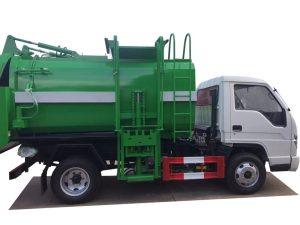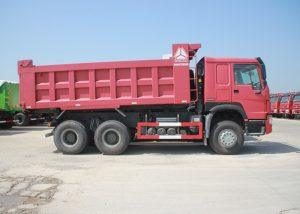Monday to Saturday - 8:00 -17:30
What is a Sewage Tank? Understanding the Basics and Beyond
A sewage tank is an essential component of sewage and wastewater management systems. It plays a pivotal role in collecting, storing, and treating wastewater produced by homes and businesses. Understanding what a sewage tank is and how it works can help you maintain it properly, ensure effective waste management, and prevent environmental damage. This article delves into the fundamentals of sewage tanks, their types, operation, maintenance, and related considerations.
1. Definition of a Sewage Tank
A sewage tank, often referred to as a septic tank or wastewater treatment tank, is a container designed to hold and treat sewage and wastewater. These tanks can vary in size, shape, and material, depending on their intended use. Sewage tanks function by allowing solid waste to settle at the bottom while allowing liquid effluent to flow out for further treatment or disposal.
2. How Sewage Tanks Work
2.1 Basic Operation
The operation of a sewage tank generally involves the following steps:
- Collection: Wastewater from toilets, sinks, and appliances flows into the sewage tank via pipes.
- Settlement: Once inside, the tank allows solids to settle to the bottom, forming sludge while lighter materials like grease float to the top, creating scum.
- Treatment: The anaerobic bacteria in the tank digest a portion of the solid waste, reducing its volume.
- Flow Out: The treated effluent exits the tank, usually flowing to a drain field or another treatment area.
2.2 Biological Processes
Biological processes play an integral role in sewage tank operation. Anaerobic bacteria thrive in the absence of oxygen, breaking down organic matter and reducing the overall waste in the tank. These processes not only help treat sewage but also contribute to nutrient cycling.
3. Types of Sewage Tanks
3.1 Septic Tanks
Septic tanks are the most common type of sewage tank for residential properties. They are usually made of concrete, fiberglass, or plastic and are buried underground. Septic tanks are ideal for rural areas lacking centralized sewer systems.
3.2 Holding Tanks
Holding tanks are temporarily used to store sewage until it can be transported to a treatment facility. They do not treat wastewater and require regular pumping to remove the accumulated waste.
3.3 Aerobic Treatment Units (ATUs)
ATUs introduce oxygen into the tank, promoting aerobic digestion by bacteria. This significantly accelerates the treatment process and is especially useful for properties with limited space for drain fields.
3.4 Constructed Wetlands
Constructed wetlands simulate natural wetland ecosystems to treat wastewater. They involve a series of planted beds that filter and treat sewage through biological and physical processes.
4. Choosing the Right Sewage Tank
4.1 Assessing Your Needs
When selecting a sewage tank, consider factors such as:
- Property size and type
- Number of occupants
- Soil conditions and drain field availability
- Local regulations and permits
4.2 Professional Consultation
Consulting with a wastewater management professional can provide valuable insights that help ensure you choose the right sewage tank tailored to your specific requirements.
5. Installation & Maintenance of Sewage Tanks
5.1 Installation Process
The installation of a sewage tank typically involves the following steps:
- Permits: Secure the necessary permits from local authorities.
- Site Preparation: Prepare the site by clearing the area and digging a hole for the tank.
- Tank Placement: Set the tank in the ground, ensuring it is level and properly connected to the plumbing system.
- Backfilling: Backfill the surrounding area with gravel or soil, ensuring proper support for the tank.
5.2 Routine Maintenance
Regular maintenance is essential for the longevity and efficiency of sewage tanks:
- Schedule pumping every 3-5 years to remove accumulated solids.
- Inspect for leaks or damages regularly.
- Monitor the drain field for signs of failure, such as standing water or odors.
5.3 Common Problems and Solutions
| Problem | Solution |
|---|---|
| Slow draining | Check for clogs or blockages in pipes. |
| Odor issues | Inspect the tank and vents for leaks and ensure proper aeration. |
| Backing up sewage | Call a professional to assess and address the issue immediately. |
6. Environmental Considerations
Proper sewage tank management is vital for environmental protection. When neglected, sewage tanks can leak and contaminate ground and surface water sources, posing a threat to ecosystems and human health.
6.1 Impact on Groundwater
When a sewage tank fails, untreated effluent can seep into the soil, contaminating groundwater supplies. Regular maintenance can reduce this risk and ensure safe water sources.
6.2 Local Regulations and Compliance
Adhering to local regulations regarding sewage tank installation, maintenance, and pumping is crucial. Failure to comply can result in fines or restrictions, as well as potential hazards to public health and safety.
7. Financial Aspects of Sewage Tanks
7.1 Initial Costs
The cost to install a sewage tank can vary widely based on factors such as:
- Type of tank
- Installation complexity
- Soil condition
- Permitting costs
7.2 Long-Term Expenses
Additional costs will include:
- Regular pumping and maintenance
- Repairs or replacements over the tank’s lifespan
- Potential environmental remediation costs if the system fails
8. Future Innovations in Sewage Management
8.1 Advanced Treatment Technologies
The future of sewage management may include advanced technologies such as:
- Enhanced biological treatment processes
- Decentralized wastewater treatment systems
- Smart monitoring systems for real-time data analysis
8.2 Sustainability Practices
Innovative practices such as composting toilets and greywater recycling can lead to more sustainable sewage management solutions, reducing the burden on traditional sewage tanks and treatment systems.
9. Frequently Asked Questions (FAQ)
9.1 What is the average lifespan of a sewage tank?
The average lifespan of a properly maintained sewage tank ranges from 20 to 30 years, but it can vary based on material and environmental conditions.
9.2 How do I know if my sewage tank needs pumping?
If you notice slow drainage, foul odors, or sewage backing up into your home, it may be time to have your tank inspected and pumped.
9.3 Can I use chemicals to clean my sewage tank?
It’s not advisable to use harsh chemicals, as they can disrupt the balance of bacteria needed for effective decomposition in the tank.
9.4 What should I avoid putting down my drains?
Avoid flushing non-biodegradable items, fats, oils, chemicals, and excessive paper products, as these can clog the sewage tank and disrupt its function.
9.5 How often should a septic tank be pumped?
A septic tank should typically be pumped every 3 to 5 years, but this may vary based on the size of the tank and the number of occupants in your household.
9.6 Are there alternatives to traditional sewage tanks?
Yes, alternatives include composting toilets, aerobic treatment units, and constructed wetlands, depending on specific needs and regulations.








